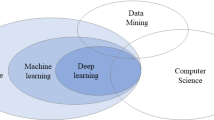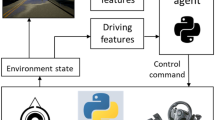Abstract
In recent years, water contamination incidents have happened frequently, causing serious losses and impacts on society. Therefore, how to quickly respond to emergency pollution incidents is a widespread concern for academic and industry scientists. In this paper, aiming to deal with the uncertain environment and randomness of water demand, we present a method based on a deep reinforcement learning emergency scheduling algorithm combined with Lamarckian local search. This method can effectively schedule water valves and fire hydrants to isolate contaminated water and reduce the residual concentration of contaminants in water distribution networks (WDNs). Furthermore, two optimization objectives are formulated, and then multi-objective optimization and deep reinforcement learning are combined to solve this problem. A real-world WDN is employed and simulation results show that our proposed algorithm can effectively isolate contamination and reduce the risk exclosure to customers.







Similar content being viewed by others
References
Gaffield SJ (xxxx) Securing our water supply: protecting a vulnerable resource
Hrudey S, Payment P, Huck P, Gillham R, Hrudey E (2003) A fatal waterborne disease epidemic in walkerton, ontario: comparison with other waterborne outbreaks in the developed world. Water Sci Technol 47(3):7–14
Schwab K (2017) The Global Risks Report 2017,12th Edition, World Economic Forum, http://reports.weforum.org/global-risks-2017/. Accessed 3 Nov 2017
Hu C, Li M, Zeng D, Guo S (2018) A survey on sensor placement for contamination detection in water distribution systems. Wirel Netw 24(2):647–661. https://doi.org/10.1007/s11276-016-1358-0
Yan X, Zhao J, Hu C, Zeng D (2017) Multimodal optimization problem in contamination source determination of water supply networks. Swarm Evol Comput 2:1–6. https://doi.org/10.1016/j.swevo.2017.05.010
Hu C, Yan X, Gong W, Liu X, Wang L, Gao L (2020) Multi-objective based scheduling algorithm for sudden drinking water contamination incident. Swarm Evol Comput 55:100674. https://doi.org/10.1016/j.swevo.2020.100674
Yau K-LA, Kwong KH, Shen C (2013) Reinforcement learning models for scheduling in wireless networks. Front Comp Sci 7(5):754–766
Kim B-G, Zhang Y, Van Der Schaar M, Lee J-W (2015) Dynamic pricing and energy consumption scheduling with reinforcement learning. IEEE Trans Smart Grid 7(5):2187–2198
Moghadam MH, Babamir SM (2018) Makespan reduction for dynamic workloads in cluster-based data grids using reinforcement-learning based scheduling. J Comput Sci 24:402–412
Karimpanal TG, Wilhelm E (2017) Identification and off-policy learning of multiple objectives using adaptive clustering. Neurocomputing 263:39–47
Ferreira PVR, Paffenroth R, Wyglinski AM, Hackett TM, Bilén SG, Reinhart RC, Mortensen DJ (2017) Multi-objective reinforcement learning-based deep neural networks for cognitive space communications, in. Cognit Commun Aerosp Appl Workshop (CCAA) 2017:1–8
Brys T, Harutyunyan A, Vrancx P, Nowe A, Taylor ME (2017) Multi-objectivization and ensembles of shapings in reinforcement learning. Neurocomputing 263:48–59
Rui W, Zhou Z, Ishibuchi H, Liao T, Tao Z (2018) Localized weighted sum method for many-objective optimization. IEEE Trans Evol Comput 22(1):3–18
Pirotta M, Parisi S, Restelli M (2015) Multi-objective reinforcement learning with continuous pareto frontier approximation. Science 2:2928–2934
Ruizmontiel M, Mandow L, Perezdelacruz J (2017) A temporal difference method for multi-objective reinforcement learning. Neurocomputing 263:15–25
Parisi S, Pirotta M, Peters J (2017) Manifold-based multi-objective policy search with sample reuse. Neurocomputing 263:3–14
Chen X, Ghadirzadeh A, Björkman M, Jensfelt P (2019) Meta-learning for multi-objective reinforcement learning. In: IEEE/RSJ international conference on intelligent robots and systems (IROS), pp 977–983. https://doi.org/10.1109/IROS40897.2019.8968092
Li K, Zhang T, Wang R (2020) Deep reinforcement learning for multiobjective optimization. IEEE Trans Cybern 2:1–12. https://doi.org/10.1109/TCYB.2020.2977661
O’Callaghan D, Mannion P (2021) Tunable behaviours in sequential social dilemmas using multi-objective reinforcement learning. In: Proceedings of the 20th international conference on autonomous agents and multiagent systems, pp 1610–1612
Westbrink F, Elbel A, Schwung A, Ding SX (2021) Optimization of dem parameters using multi-objective reinforcement learning. Powder Technol 379:602–616
Ren T, Niu J, Cui J, Ouyang Z, Liu X (2021) An application of multi-objective reinforcement learning for efficient model-free control of canals deployed with IoT networks. J Netw Comput Appl 182:103049
Taormina R, Galelli S (2018) Deep-learning approach to the detection and localization of cyber-physical attacks on water distribution systems. J Water Resour Plan Manag 144(10):04018065
Sutton RS, Barto AG (1999) Reinforcement learning: an introduction. Neural Inf Process Syst 2:158
Mnih V, Kavukcuoglu K, Silver D et al. (2013) Playing atari with deep reinforcement learning, arXiv:1312.5602
Hu C, Cai J, Zeng D, Yan X, Gong W, Wang L (2019) Deep reinforcement learning based valve scheduling for pollution isolation in water distribution network. Math Biosci Eng 17:105–121
Van Moffaert K, Drugan MM, Nowé A (2013) Hypervolume-based multi-objective reinforcement learning. In: International conference on evolutionary multi-criterion optimization, Springer, pp 352–366
Li K, Zhang T, Wang R (2020) Deep reinforcement learning for multiobjective optimization. IEEE Trans Cybern 5:1669
Acknowledgements
This research was supported in part by the NSF of China (Grant No. 62073300, U1911205, 62076225). This paper has been subjected to Hubei Key Laboratory of Intelligent Geo-Information Processing, China University of Geosciences, Wuhan 430074, China.
Author information
Authors and Affiliations
Corresponding author
Additional information
Publisher's Note
Springer Nature remains neutral with regard to jurisdictional claims in published maps and institutional affiliations.
Rights and permissions
About this article
Cite this article
Hu, C., Wang, Q., Gong, W. et al. Multi-objective deep reinforcement learning for emergency scheduling in a water distribution network. Memetic Comp. 14, 211–223 (2022). https://doi.org/10.1007/s12293-022-00366-9
Received:
Accepted:
Published:
Issue Date:
DOI: https://doi.org/10.1007/s12293-022-00366-9




